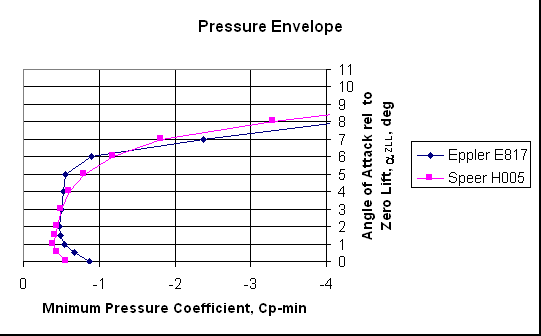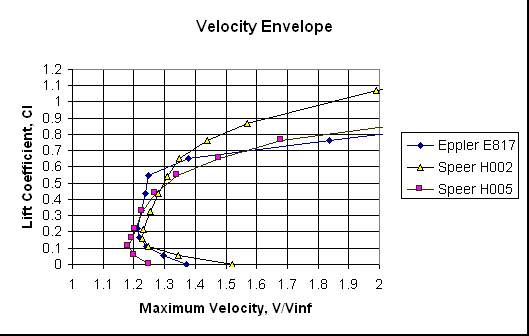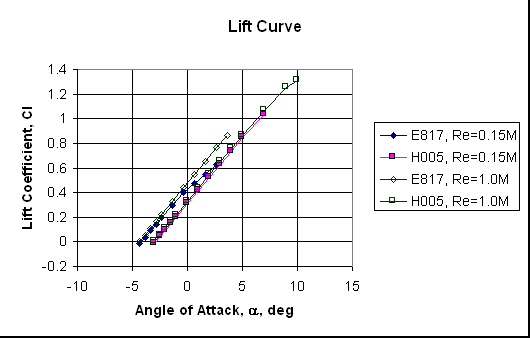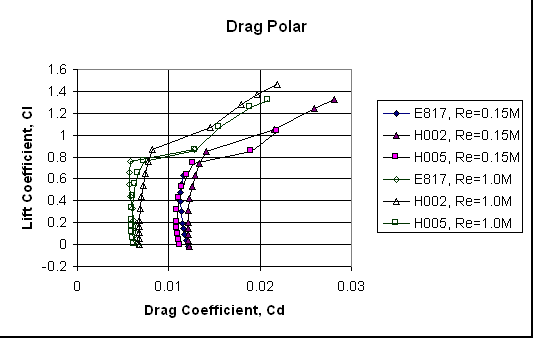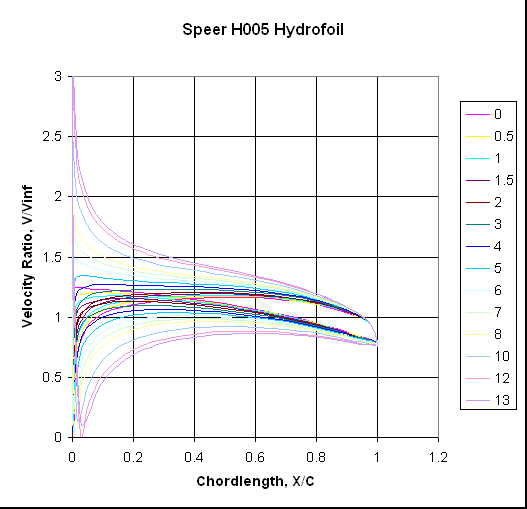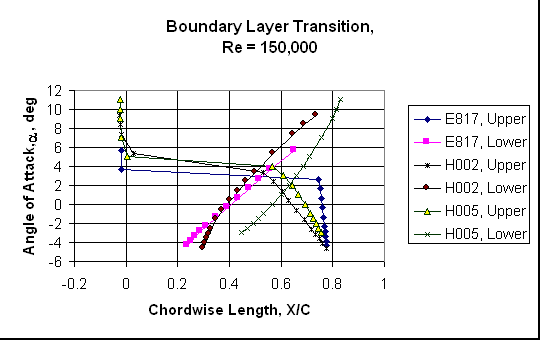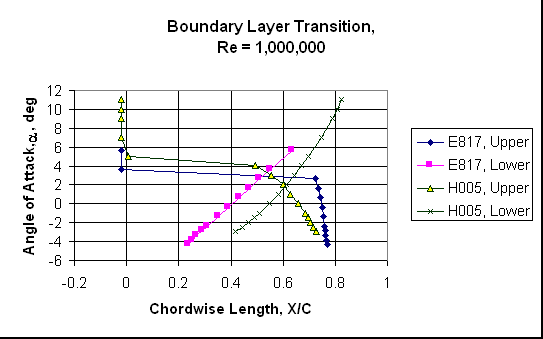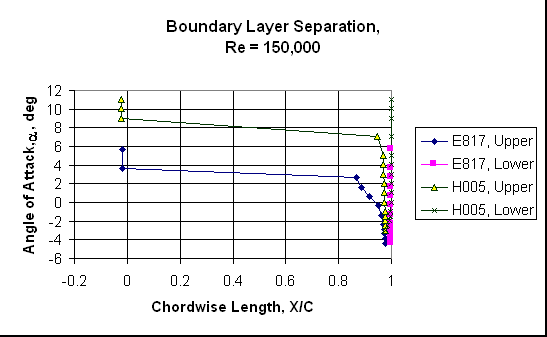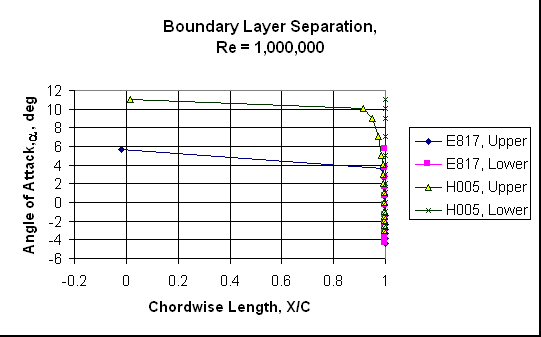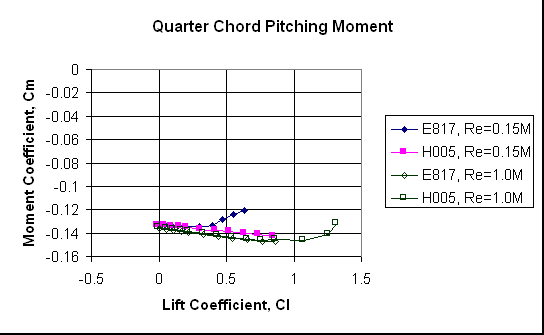Low Reynolds Number Hydrofoils
Eppler used a rooftop philosophy in the design of the E817, which has a constant maximum velocity at the design angle of attack. This results in a pressure recovery zone aft of the rooftop which is too short for low Reynolds numbers, and the flat rooftop makes for a tendency toward leading edge stall.
The H105 section has convex velocity profiles, which use the entire surface to control the position of the laminar separation bubble. The location of the maximum velocity also changes with angle of attack. The H105 is restrained in its use of aft loading to avoid possible trailing edge separation problems. The result is a hydrofoil which sacrifices some of the upper range of the cavitation envelope for a significantly higher maximum lift, while still maintaining low drag and a high incipient cavitation speed.
The H002 section shown for comparison is an earlier design. This hydrofoil was designed for a higher range of angles of attack than the H005. It had a similar upper surface design approch to the H005, but he lower surface used a rooftop distribution similar to the Eppler hydrofoils. This section had a higher minimum drag, and slightly lower incipient cavitation speed. Its biggest drawback was its excessive aft loading, which may not have worked well in practice. Its chief advantage, higher maximum lift, was more than required since hdyrofoil craft tend to operate within a narrow range of pitch attitudes.

